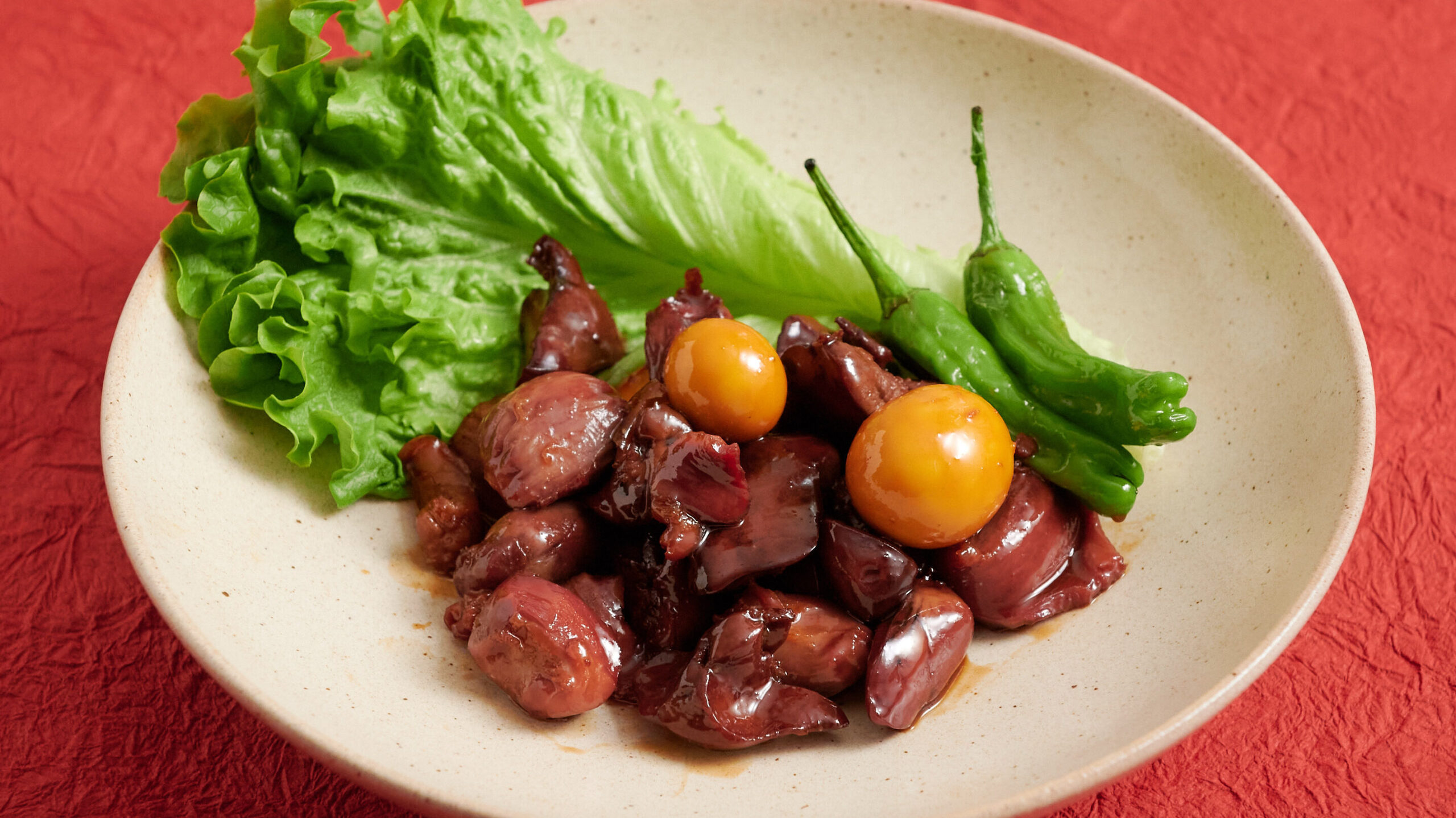
So, have you ever tried a dish that turns humble ingredients into something truly special? Let me introduce you to Torimotsu-ni, a Yamanashi specialty that does just that! It’s a braised dish of chicken giblets, cooked in a rich, sweet, and savory sauce – a local comfort food with a fascinating backstory.
Dish Name: Torimotsu-ni (鳥もつ煮)
- Primary Area of Tradition: Kofu City
- Main Ingredients: Chicken liver, gizzard, heart, kinkan (immature eggs), “himo” (various giblet parts), soy sauce, sugar, sake
How It’s Eaten / Served
Torimotsu-ni is a braised dish of chicken giblets – liver, gizzard, heart, kinkan (immature eggs), and “himo” (various other parts) – simmered in a sweet soy sauce-based sauce. The story goes that around 1950, shortly after World War II, the second-generation owner of Okuto Honten Kokubo-ten, a soba restaurant in Kofu City established in 1913, was approached by a butcher. The butcher asked if the restaurant could do anything with the chicken giblets that were normally discarded. In a time when food was scarce, the restaurant owner experimented to create a delicious and affordable dish. Using soy sauce and sugar, which were considered precious ingredients at the time, they developed “Torimotsu-ni,” a richly flavored braised giblet dish. With its sweet and savory taste, it pairs perfectly with both sake and white rice, and it has become a staple dish in Kofu City, found in izakayas (Japanese pubs), set meal restaurants, and soba shops. While “Motsuni” (もつ煮) generally refers to a stewed dish cooked for a long time, “Torimotsu-ni” is unique in that the liver and other ingredients are quickly teriyaki-braised in a small amount of sauce over high heat, sealing in the giblets’ flavor and sweetness. The “kinkan” (きんかん) used in this dish also has an interesting story behind its name.
Cultural Background and Preservation
Torimotsu-ni is enjoyed year-round, regardless of the season. To prepare Torimotsu-ni, remove any unwanted parts from the liver, gizzard, heart, kinkan, and “himo,” and cut them into bite-sized pieces. Thoroughly wash the giblets in lightly salted water, then drain. Bring soy sauce and sugar to a boil in a frying pan over high heat, diluting with sake or water if the sauce is too strong. When the sauce begins to bubble slightly, add the giblets, lightly stir, and cover with a lid. Stir occasionally to prevent sticking, and the dish is ready when the sauce thickens and begins to caramelize on the edge of the pan. It’s often served with lettuce or cooked shishito peppers.
Torimotsu-ni is a standard menu item in soba restaurants, Hoto restaurants (a Yamanashi noodle dish), and set meal restaurants. It’s also readily available in the prepared food sections of supermarkets. Since 2008, a local revitalization group called “Minasama no En wo Torimotsu-tai” (みなさまの縁をとりもつ隊), formed by young employees of the Kofu City Hall, has been promoting Torimotsu-ni as a Kofu B-grade gourmet dish nationwide. This has led to increased media coverage and online orders from outside the prefecture.
Additional information:
- Motsuni (もつ煮): A general term for stewed offal or giblets.
- Kinkan (きんかん): In this context, refers to the immature eggs of a chicken. The name literally means “gold orange.”
- Himo (ひも): A general term for various less-defined parts of the chicken’s giblets. It can refer to tubes, membranes, or connective tissues.
- Izakaya (居酒屋): A Japanese-style pub.
- Hoto (ほうとう): A regional noodle dish from Yamanashi Prefecture, featuring thick udon noodles stewed with vegetables in a miso-based broth.
- B-grade gourmet (B級グルメ): A term for local, inexpensive, and unique dishes that represent a region’s food culture.
- Shishito (ししとう): A small, mild Japanese chili pepper.
The information about regional cuisine featured on this website (Piggy's Grandma of Japan) is summarized and adapted from the Ministry of Agriculture, Forestry and Fisheries of Japan (MAFF) website, "Our Regional Cuisines"Additional commentary is provided based on the unique experiences and perspectives of the site's editors.
The copyright for the original content regarding regional cuisine belongs to the Ministry of Agriculture, Forestry and Fisheries of Japan.
The summaries and adaptations published on this site are intended for informational purposes only. Piggy's Grandma of Japan does not guarantee the accuracy or completeness of this information. For the most accurate and complete details, please refer to the original pages on the MAFF website.

